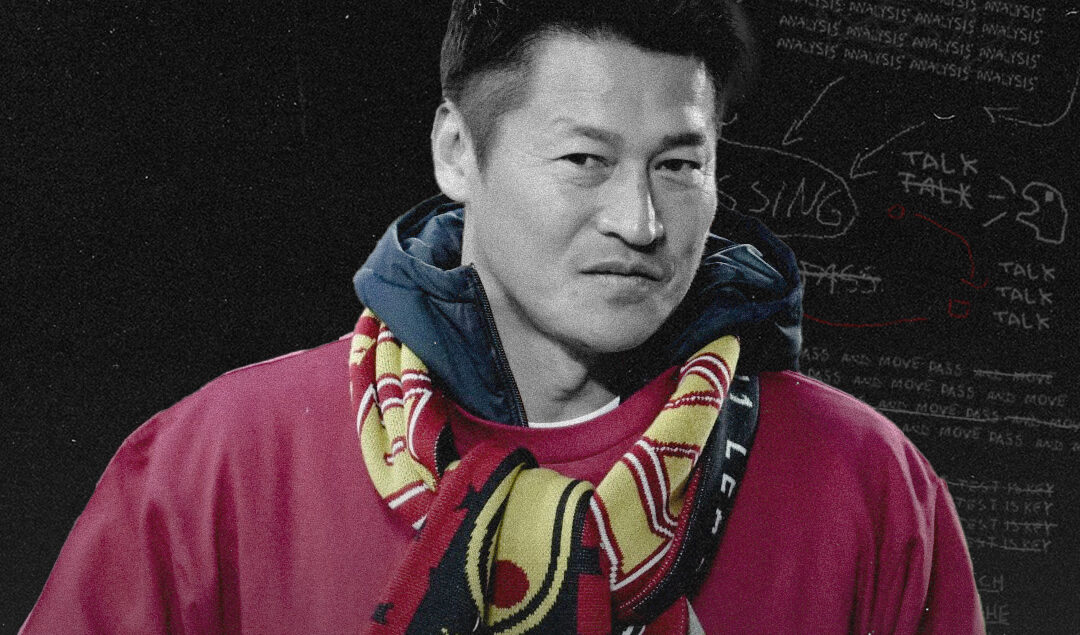How Vissel Kobe’s Set-Piece Excellence Paved the Way for their J.League Title
Vissel Kobe won the J.League title for the second time in their history last month. They scored 61 goals, the third-best attack (tied with Yokohama) behind Kawasaki (66) and Hiroshima (72) and conceded 36 goals, the third-best defense after Osaka (35) and Machida (34).
Under coach Takayuki Yoshida, Vissel Kobe scored 25 goals from set pieces, including 15 from corners. However, they also conceded 9 goals from corners. Precisely, set-piece goals accounted for 40.89% of their total goals. This article will discuss the corner kick routines from which Vissel Kobe scored 15 goals in 38 matches, a crucial element in their title win.
Corner Kick Takers: Takahiro Ogihara took corners from the right side with in-swinging deliveries, while Yosuke Ideguchi took them from the left, also with in-swinging deliveries. This was Vissel’s general approach – delivering the ball towards the goal. However, they had multiple routines for each corner angle, using different techniques for the same area but with varying styles.
Attacking the Near Post Using Drag and Screening Techniques:
The initial idea was to overcome zonal marking, especially at the near post. As shown in the image below, the opponent defended with six players inside the six-yard box, two players marking zonally inside the penalty area, and one player for short corners. Kobe’s objective before the corner was to attack the near post, the most heavily defended area by opposing teams.
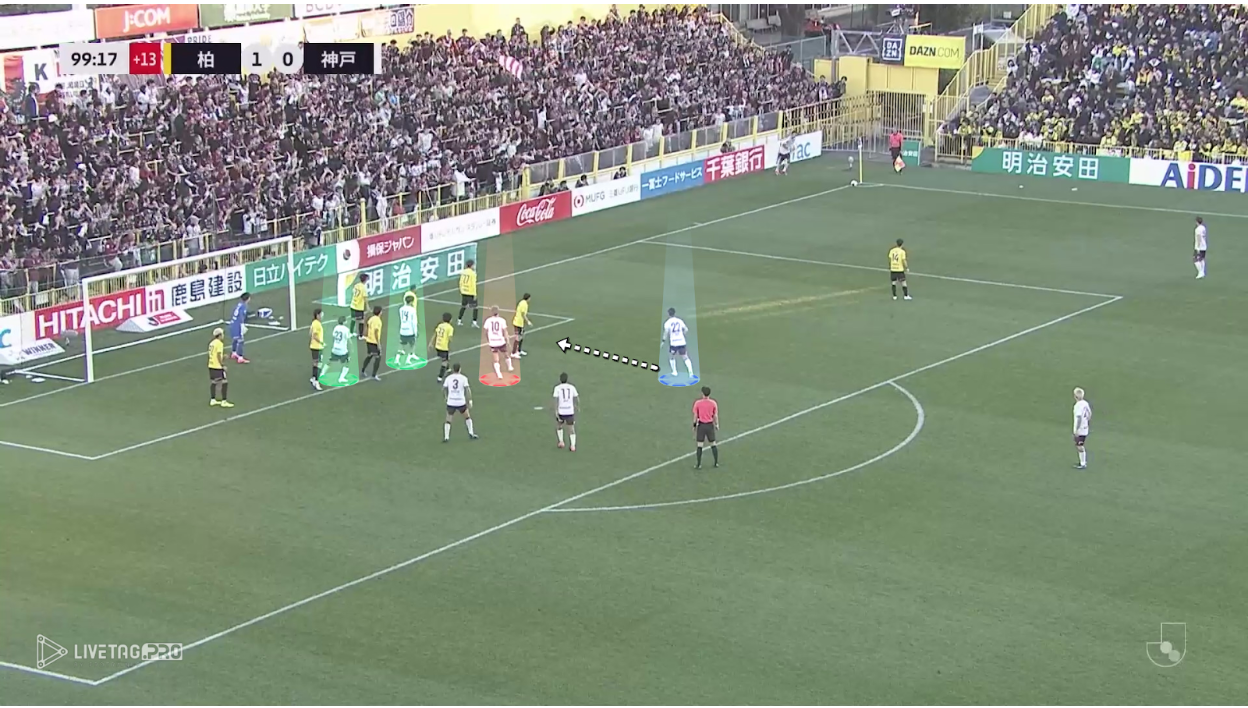
The technique used to overcome this defensive density involved a player (blue) running towards the near post, pulling away defenders. The target player (red) prepared to occupy the space behind the near-post defenders, while two players (green) inside the six-yard box screened defenders, preventing them from tracking the target player.
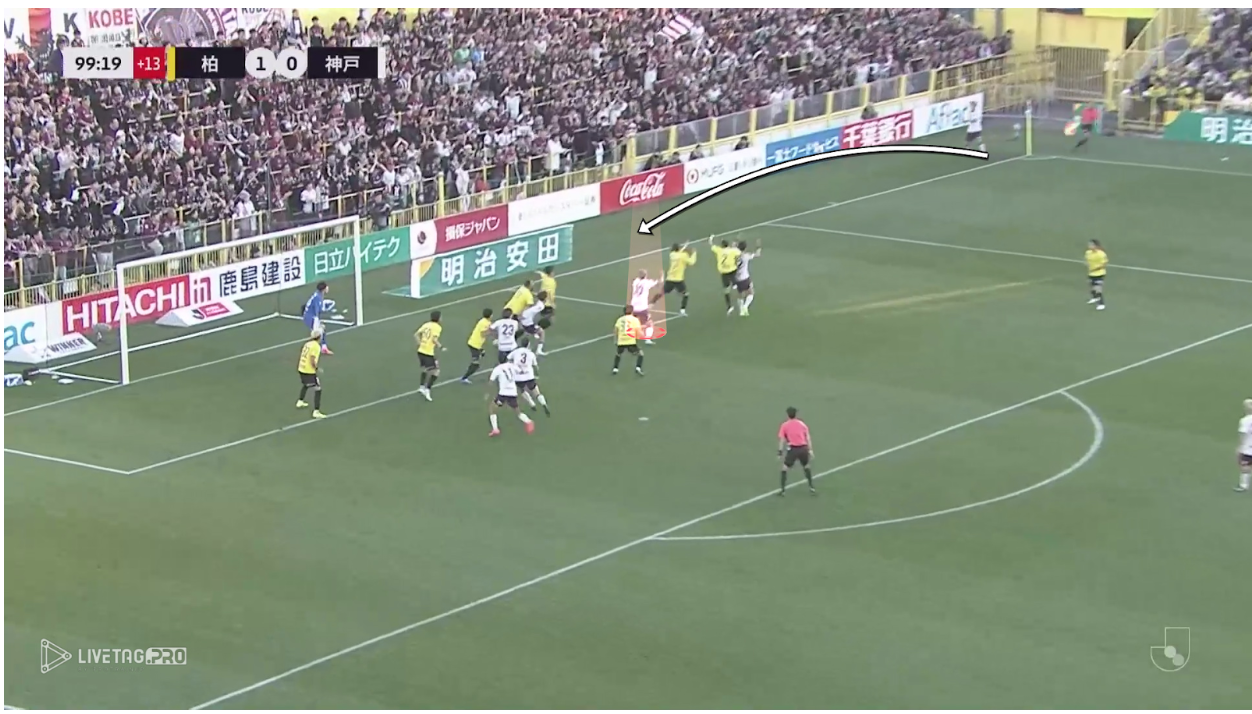
As the corner was taken, the decoy runner (blue) moved, dragging away two defenders, and leaving the target player (Yuya Osako) free to score. The screening players performed their roles effectively.
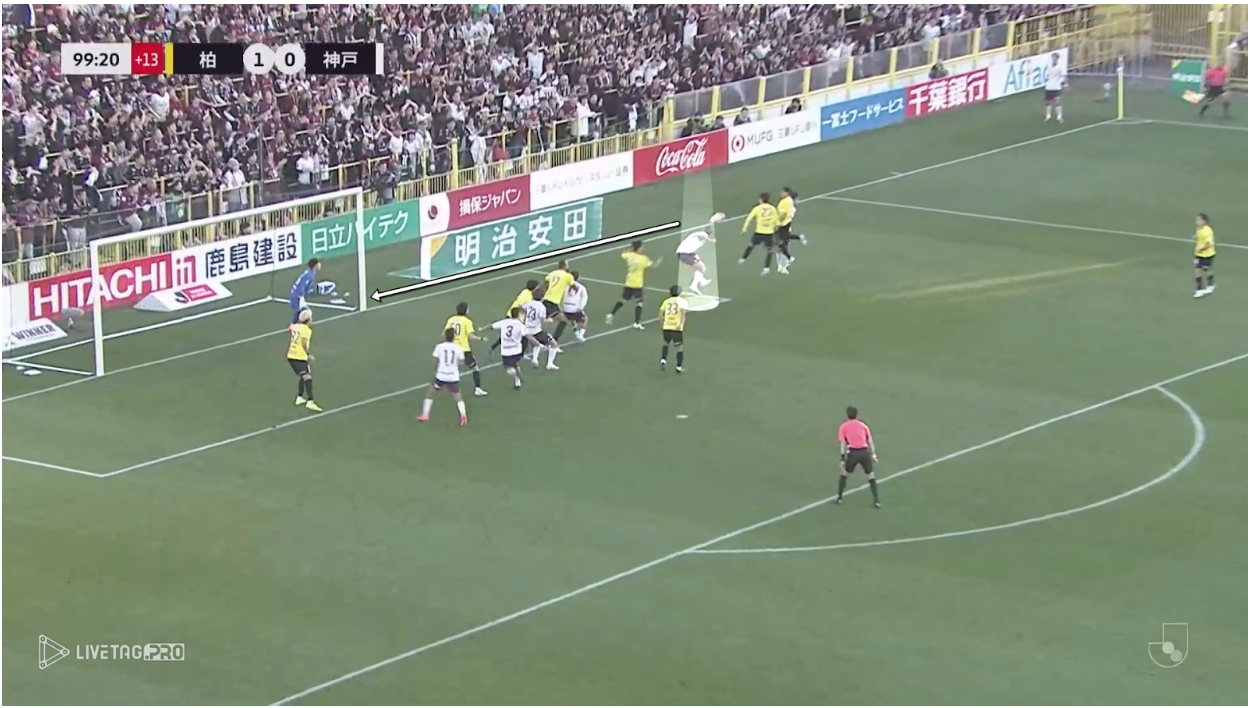
Another Near-Post Attack with a Variation of the Same Technique
In their match against Jubilo Iwata, the opponent used a similar defensive setup. The target player (red), Tetsushi Yamakawa, stood outside the six-yard box, away from the near post. One of the two screening players (green) had a dual role: pulling defenders away from the near post and then screening a defender from interfering with the target player.
The other screen blocked another defender. Two players at the far post secured any loose balls and disrupted the opponent’s defense, reducing the number of defenders at the near post.
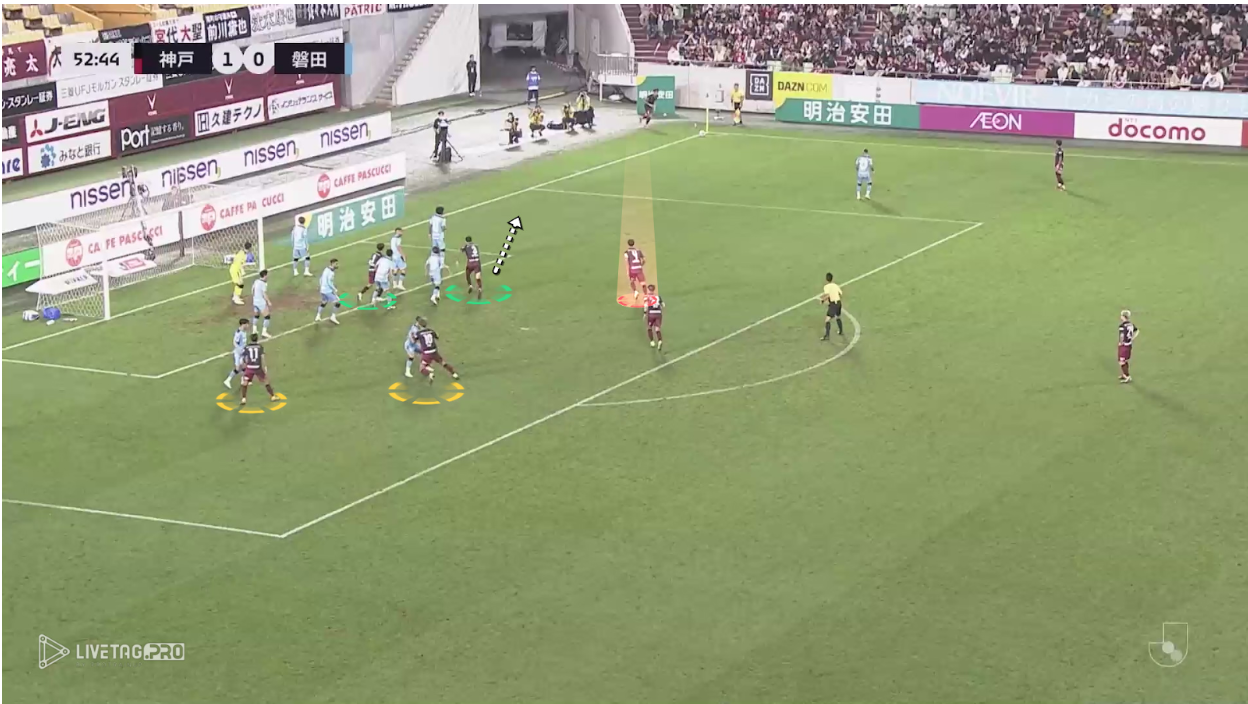
As the corner was taken, Yamakawa moved into the target area after his teammates screened the defenders, allowing him to shoot freely and score.
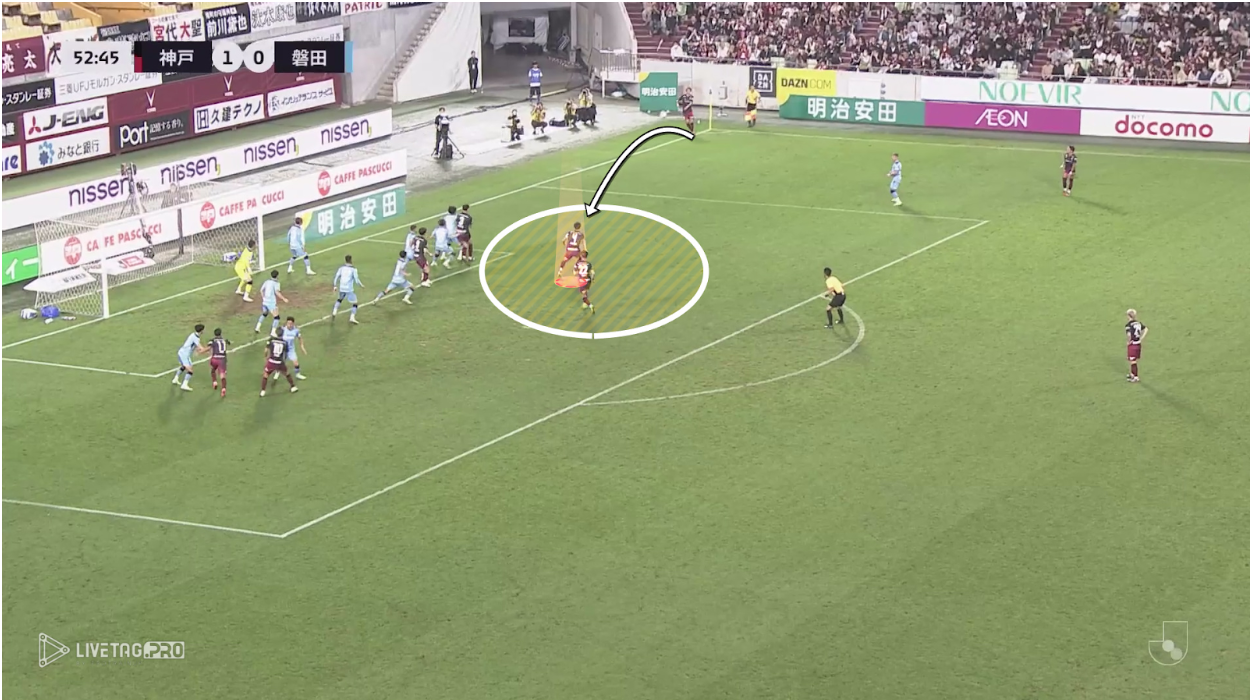
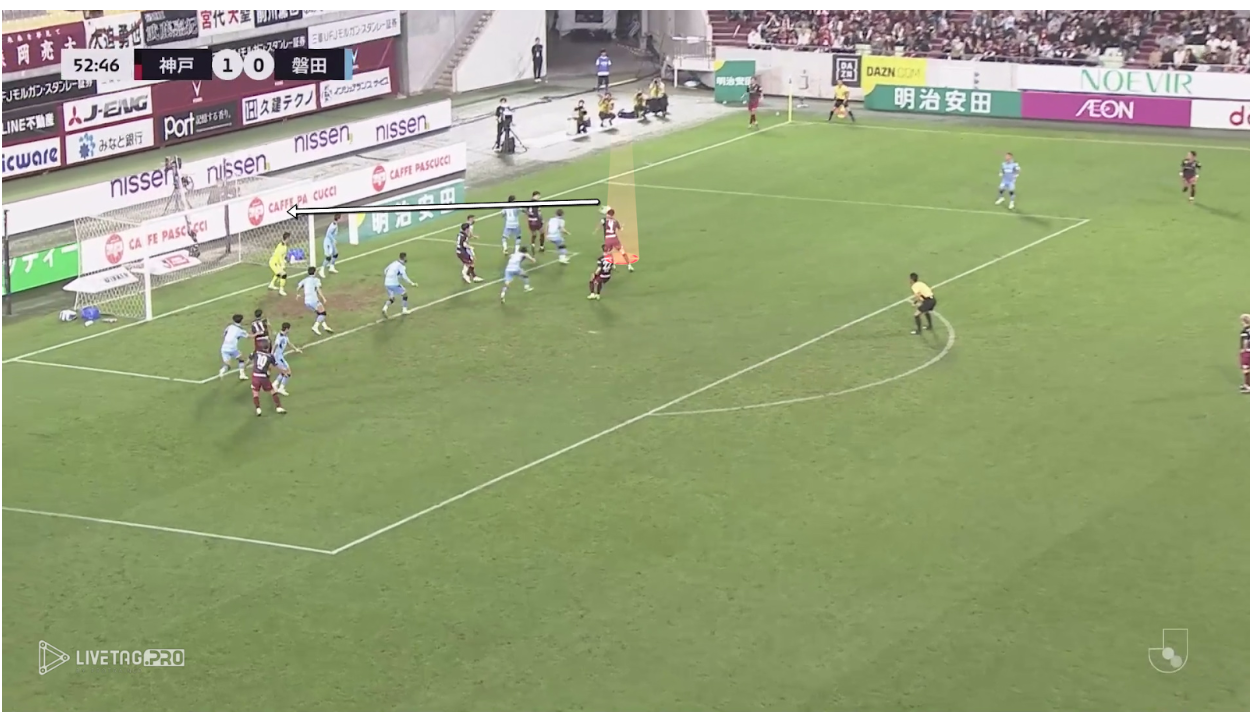
In the same match, they executed the same routine with the same technique, but Yamakawa’s header wasn’t powerful enough.
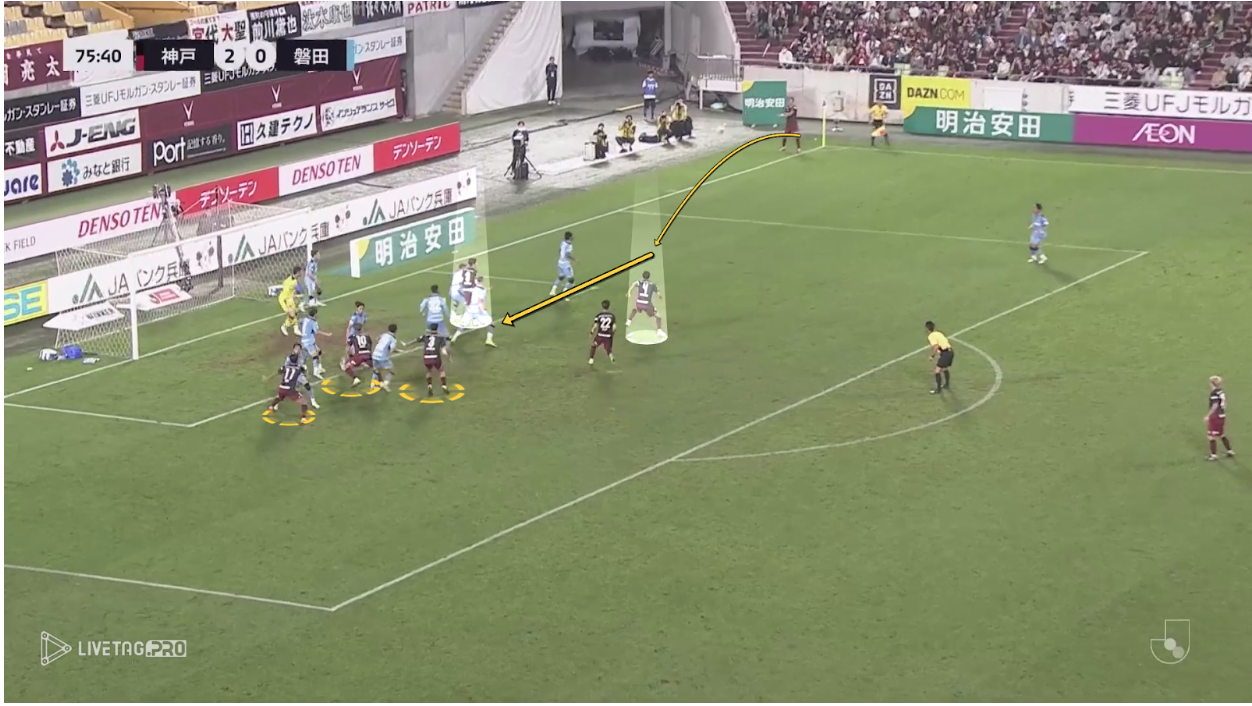
Attacking Against a Zonal Defense with Strong Near-Post Coverage
In their match against Urawa Reds, they faced a zonal defense with tight near-post marking. Urawa defended with nine players in a zonal setup and one player in the clearance zone. Vissel Kobe placed six players in the penalty area, meaning Urawa had a three-player advantage. The target player (white), Yoshinori Muto, stood on the penalty spot. A player (blue) screened the goalkeeper’s view.
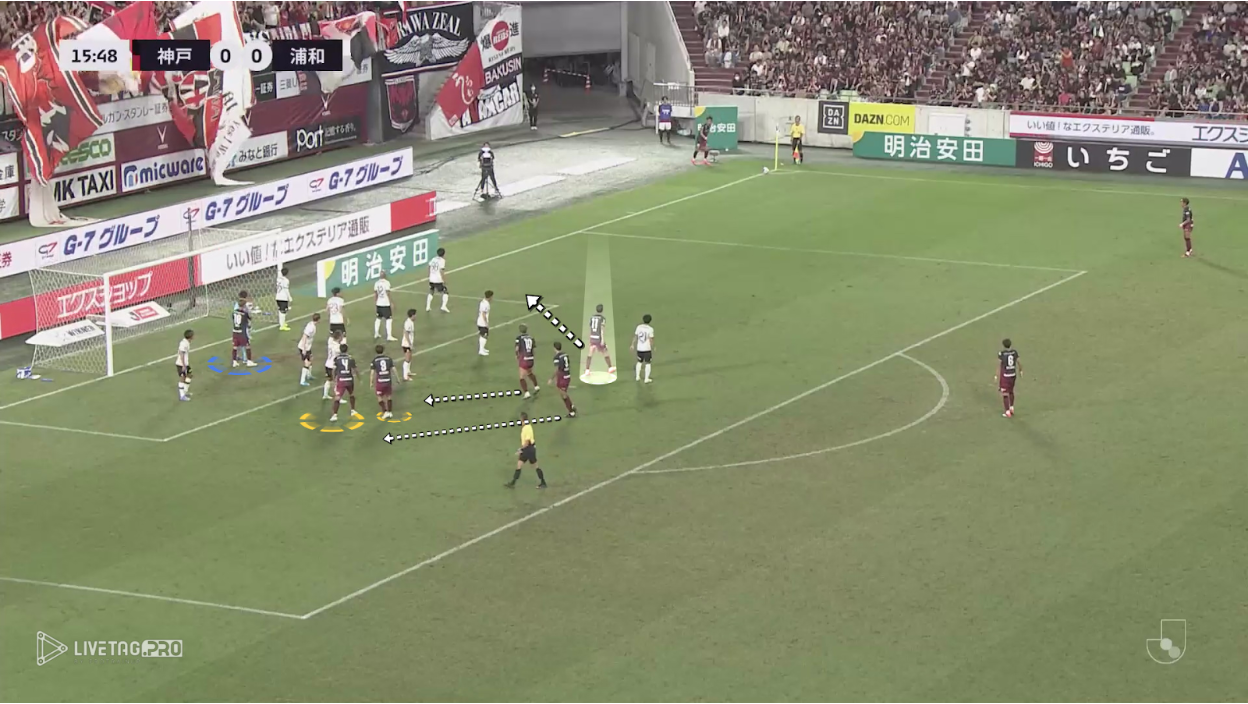
This time, they didn’t use the near-post pull. Instead, players (white arrows, yellow circles) ran as if they were targeting the far post, drawing the opponent’s attention. Muto’s posture suggested he wouldn’t be involved, but with his teammates’ movement and the defenders’ distraction, Muto arrived in the target area.
A Vissel Kobe player in the clearance zone also drew away the clearing defender. Muto headed the ball and scored, but their near-post attack was effective regardless of the number of defending players.
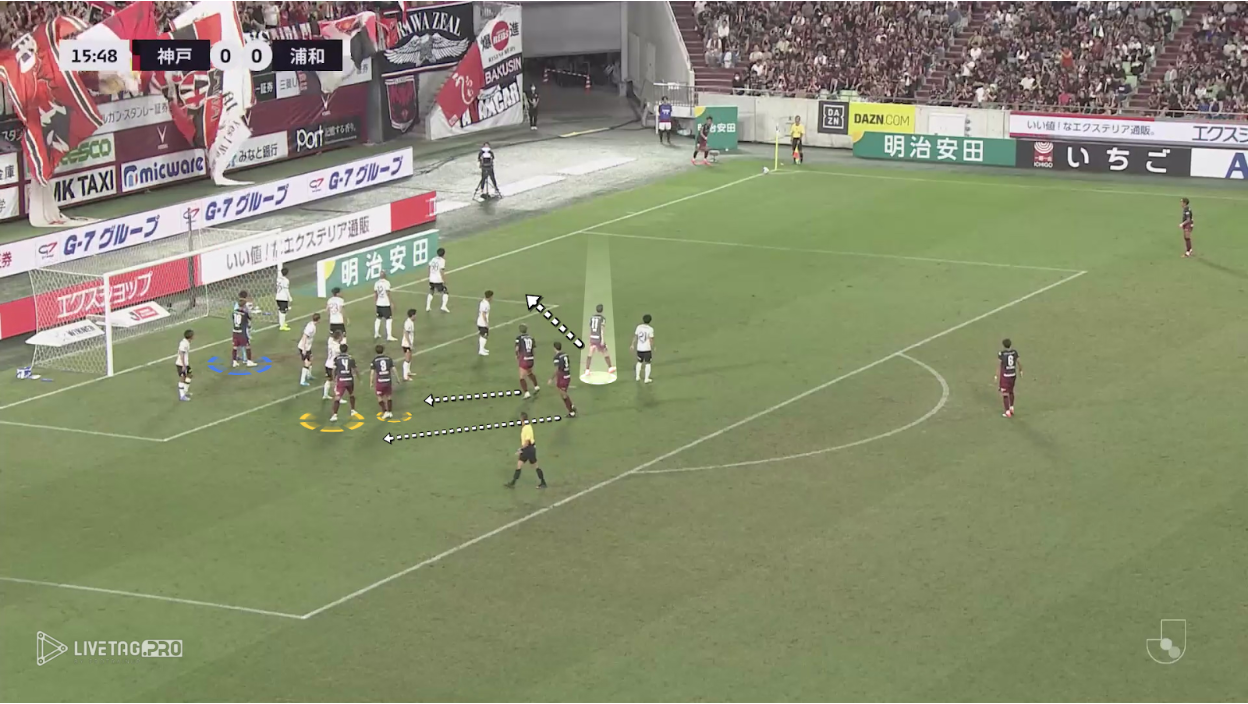
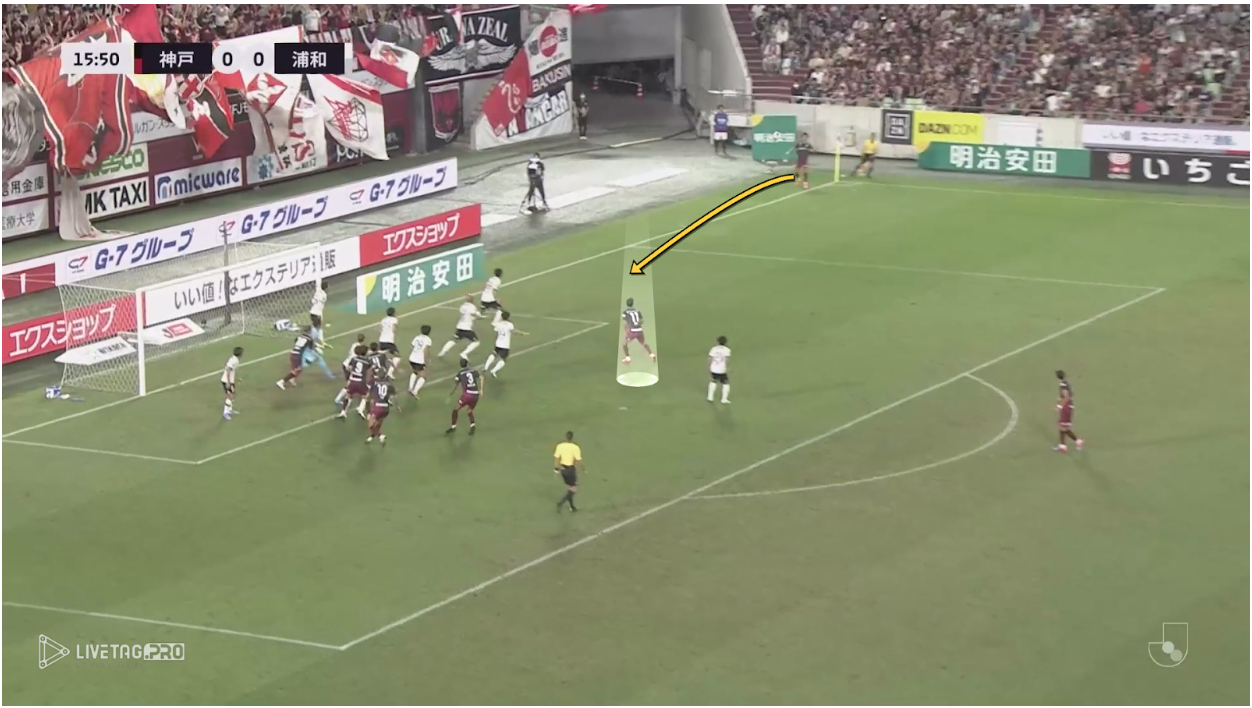
Utilizing the Clearance Zone Player to Attack Different Areas:
Besides the near post, another key target area used a player in the clearance zone to attack from a different angle.
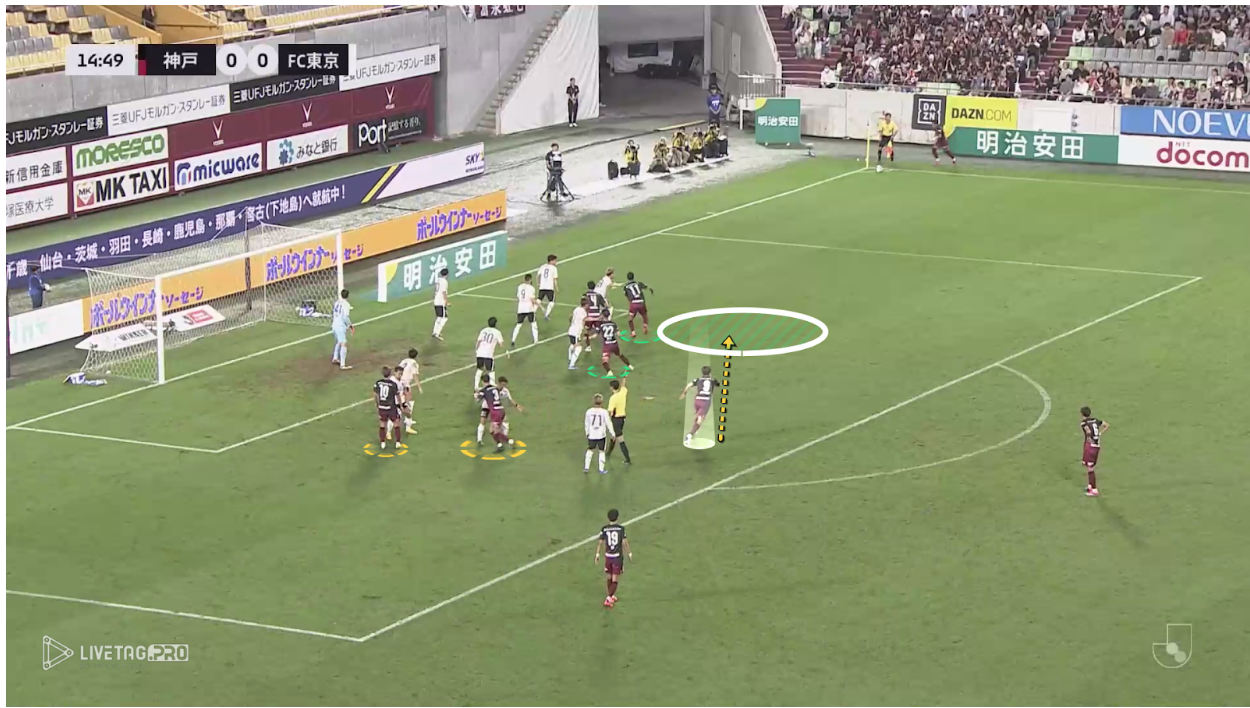
In the image below, Vissel Kobe positioned six players in the penalty area against a mixed defense: three defenders at the near post, four players marking zonally, and one player in the clearance zone.
Attacking the near post would be difficult. Kobe’s strategy was to place three players (green) at the near post to screen defenders, two players (yellow) at the far post to secure second balls, and one player near the edge of the box. The ball was played low toward the target player (white) at the near post. The target player, Osako, was late in his run, allowing a defender to intercept the ball.
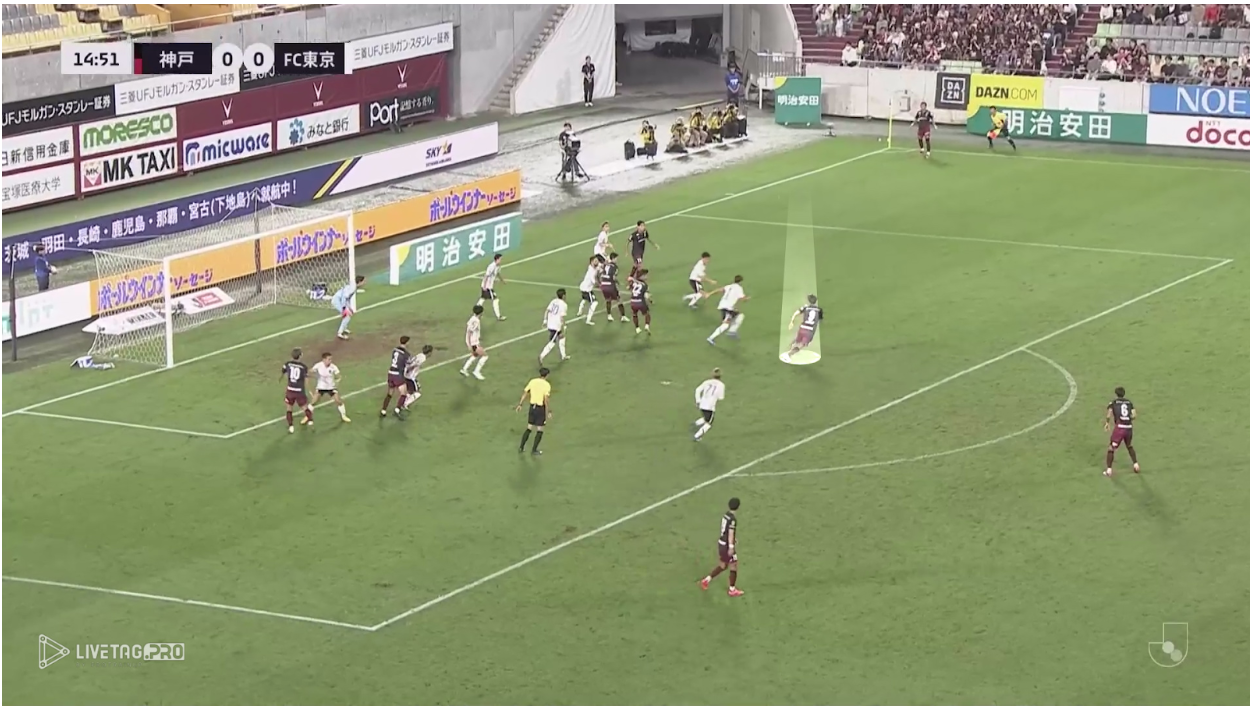
Another Idea: Using the Clearance Zone Player to Attack the Far Post:
The target player (white), Ryuho Kikuchi, was in the clearance zone. Yosuke Ideguchi (red) distracted the clearance zone defender, who used a hybrid zonal and man-marking system: five players in zonal defense and four man-marking. Two players (green) inside the six-yard box screened defenders from running to the far post. Four players on the penalty spot made decoy runs towards the near post.
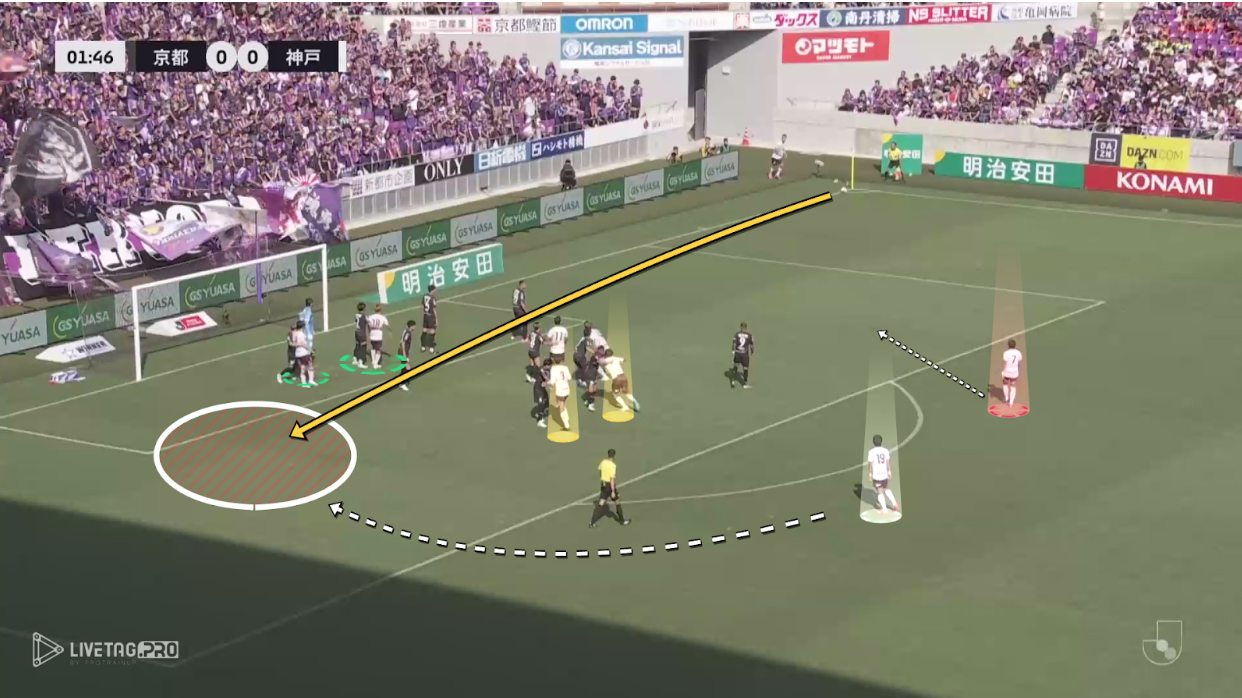
The ball was played slightly out-swinging. Kikuchi arrived right after his teammates occupied the defenders, but his shot was off-target.
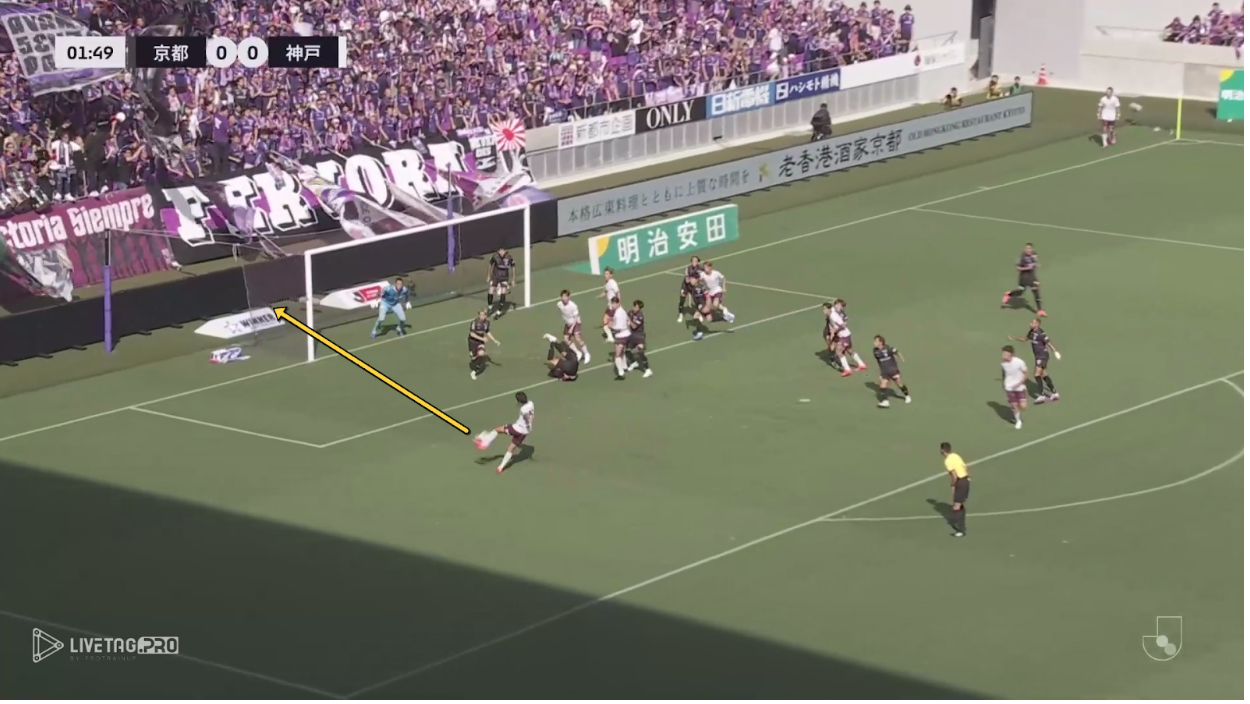
Continuing to Show Vissel Kobe’s Patterns Using the Clearance Zone Player
The opponent used a strict zonal defense, leaving a player in the short corner area, two defenders man-marking at the far post, and the rest inside the six-yard box.
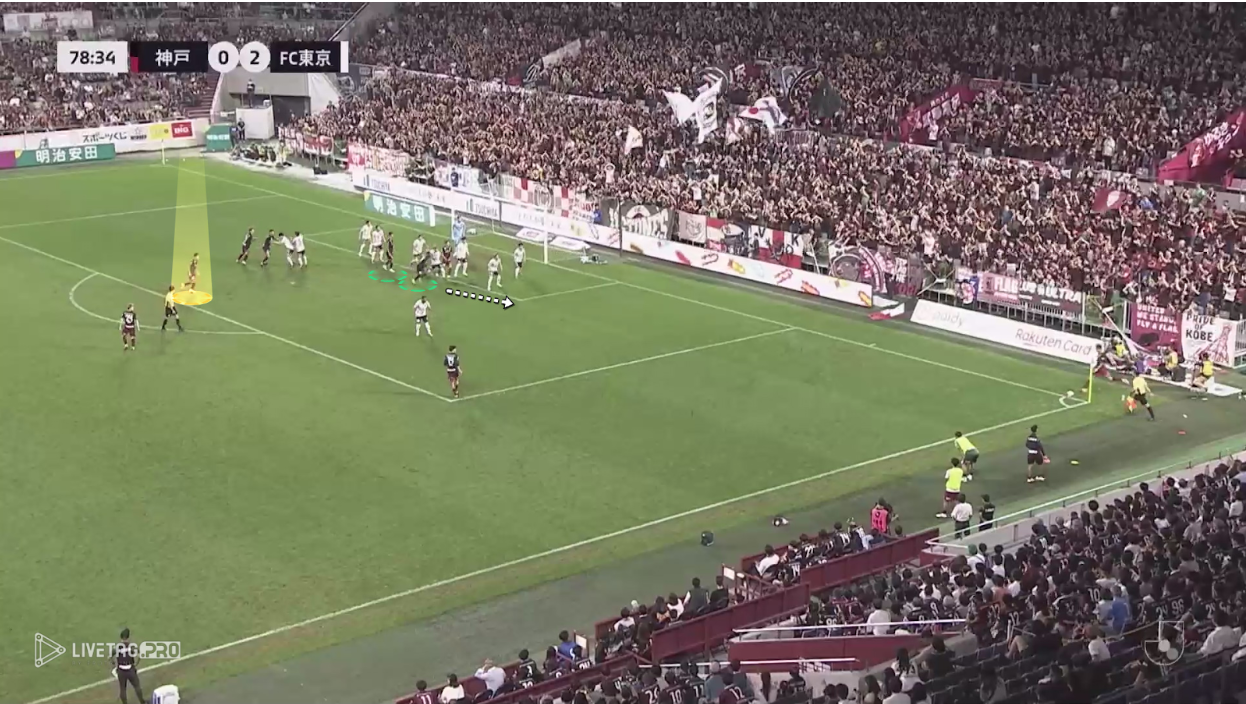
Vissel’s players are positioned with one player inside the six-yard box to screen a player in the area in front of the goal, two players (green) to screen zonal players, and two defenders to distract the opponent’s defenders.
The target player (yellow) stood in the clearance zone without any defender. The presence of a decoy player for the short corner drew away the clearance zone defender. The target player ran into the area, and with effective screening, Muto got a shot, but the goalkeeper saved it.
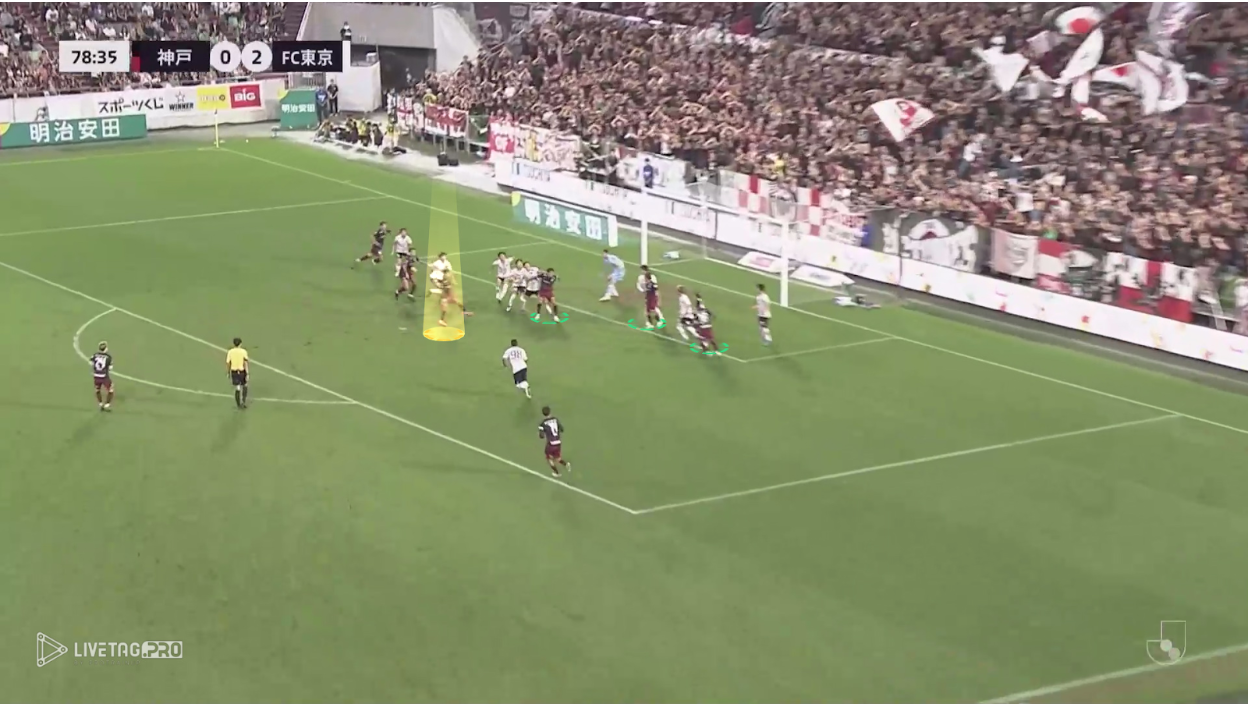
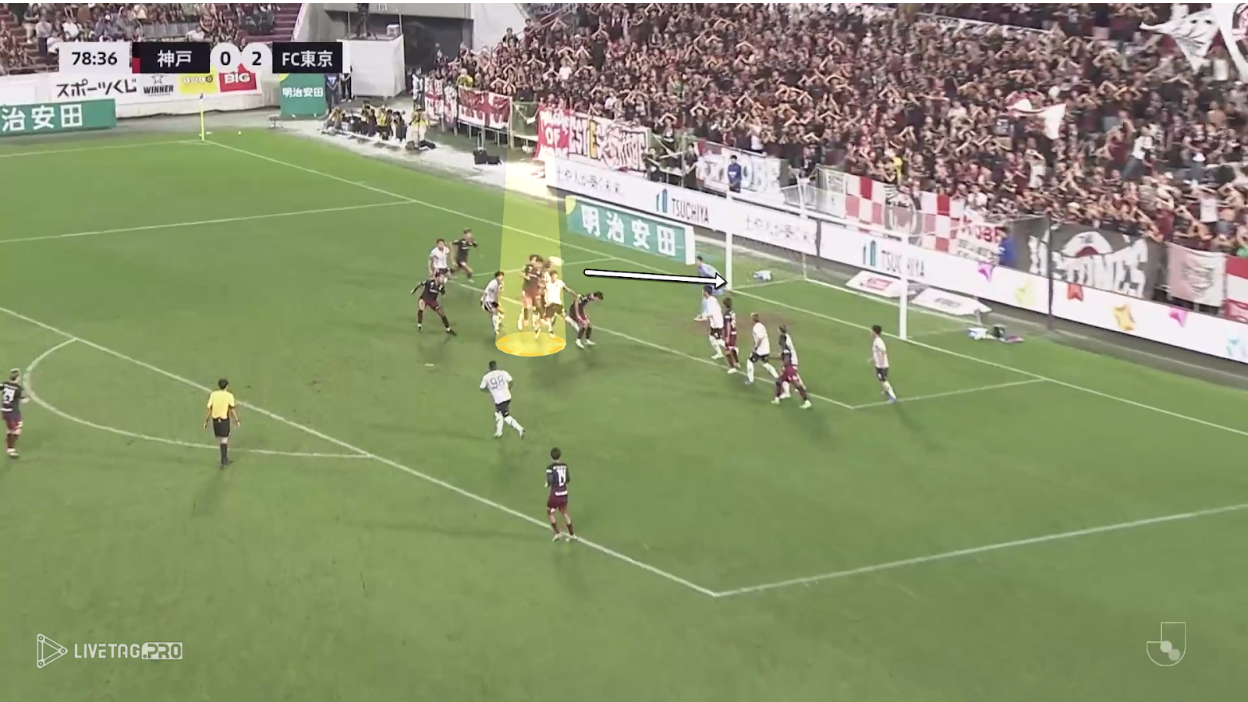
They were adept at using the clearance zone player, attacking all angles through him. Against Osaka, who placed only two players on the penalty spot and the rest inside the six-yard box, Vissel used a short corner routine. A player started in the clearance zone and then ran for the short corner. Three players inside the six-yard box screened defenders, a player at the penalty spot (red) screened a defender, and two attackers (white) faced one defender in the clearance zone.
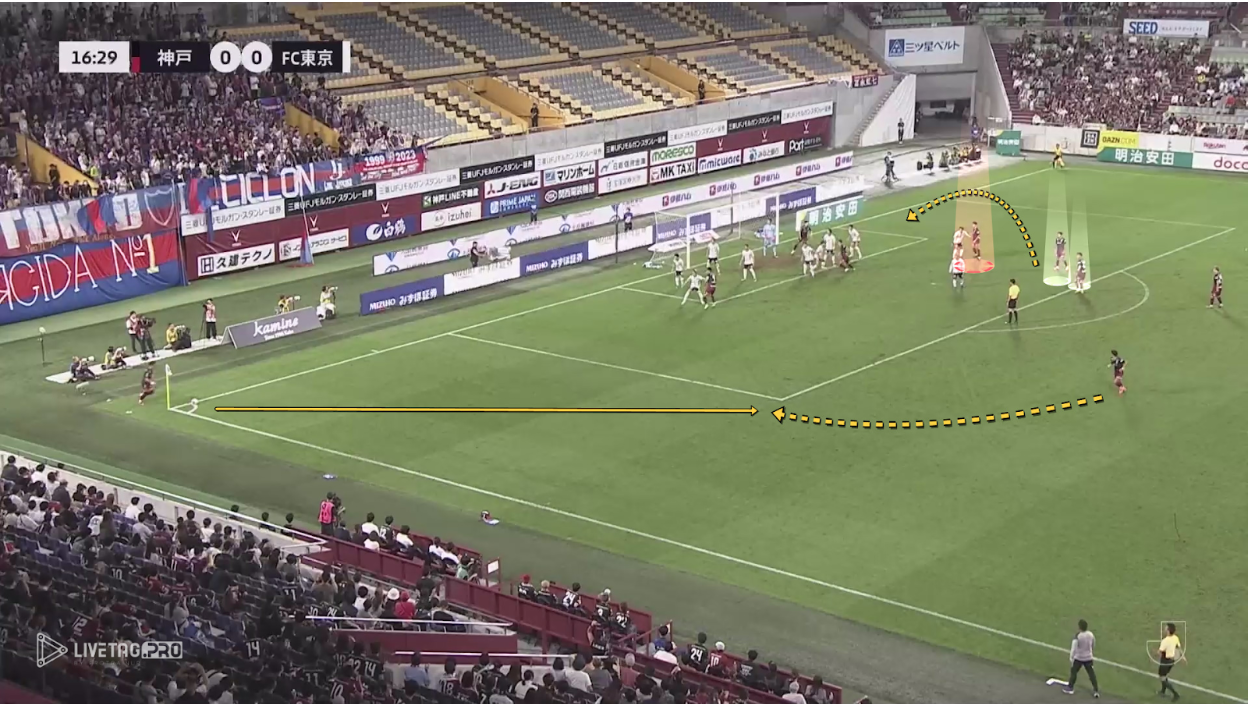
A short pass drew the man-marking defender (red) towards the near post, creating space for the two players (white) to attack the far post behind the opponent’s defensive line, but the cross was inaccurate.
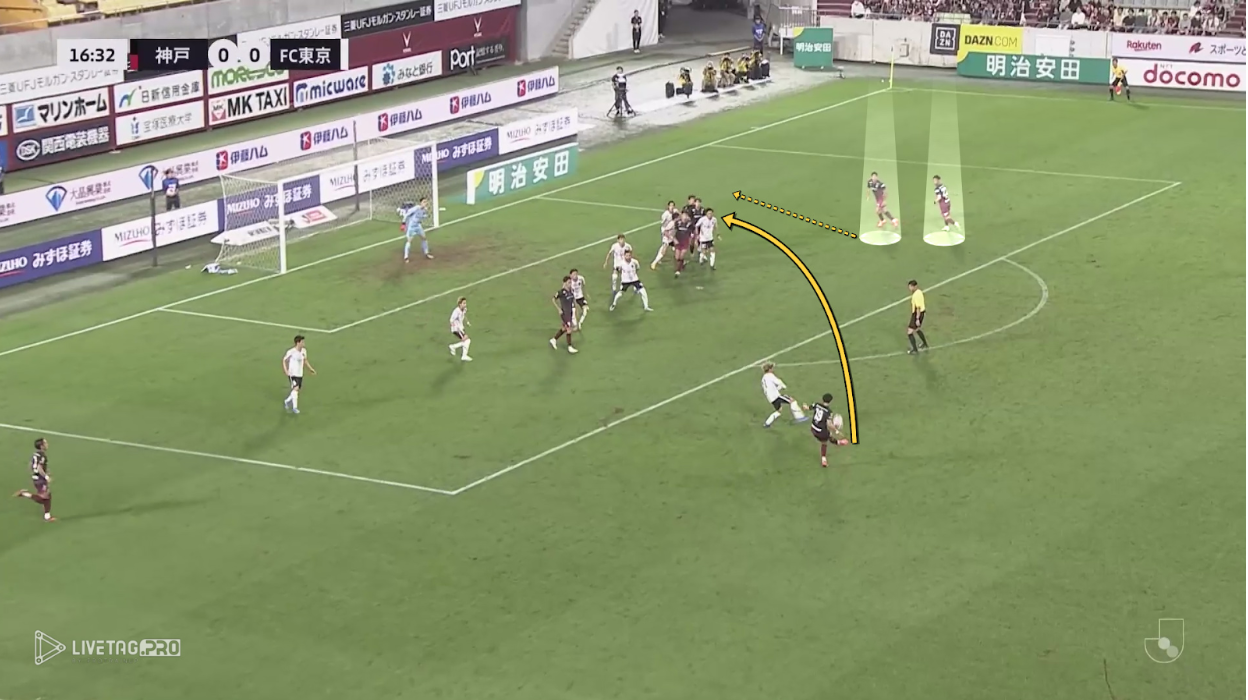
Another Short Corner Variation
The defending team used zonal marking, leaving one player in the clearance zone against five Vissel players. The attackers (green) screened defenders from running towards the far post as the short pass was played.
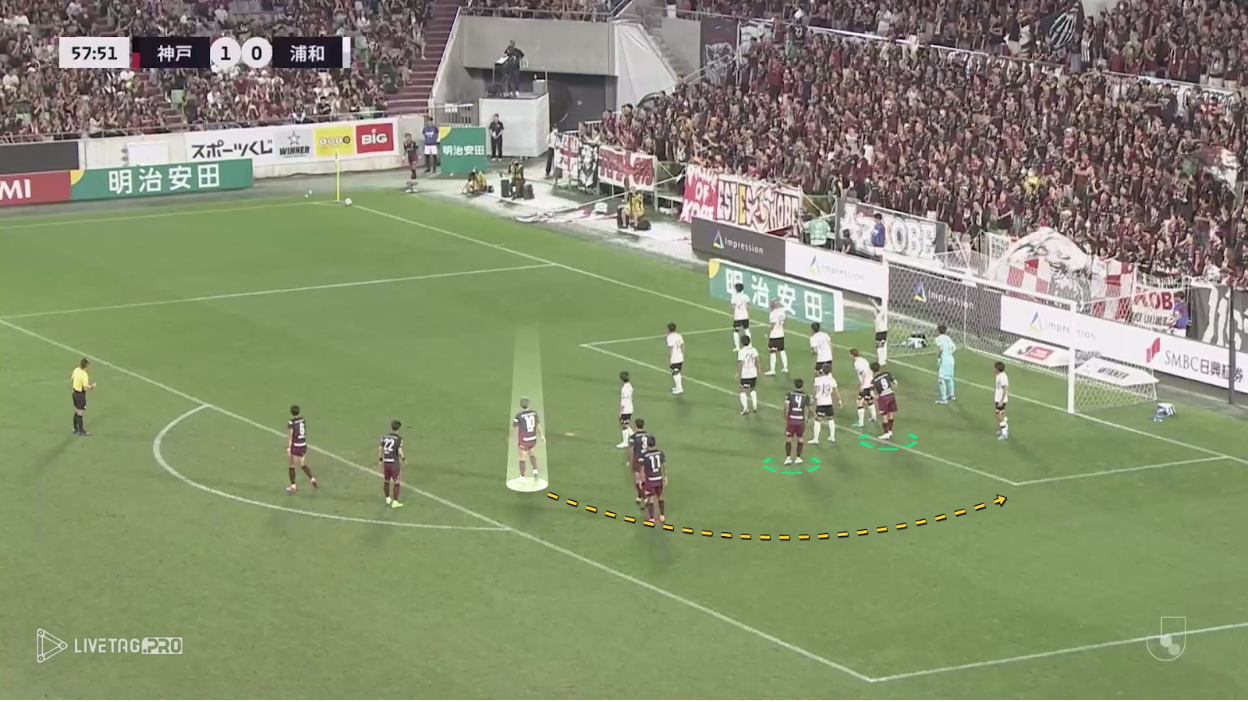
The target player, Osak0 (yellow arrow), moved towards the far post with his teammate Muto. The pass was good, but Osak0 didn’t control the ball well.
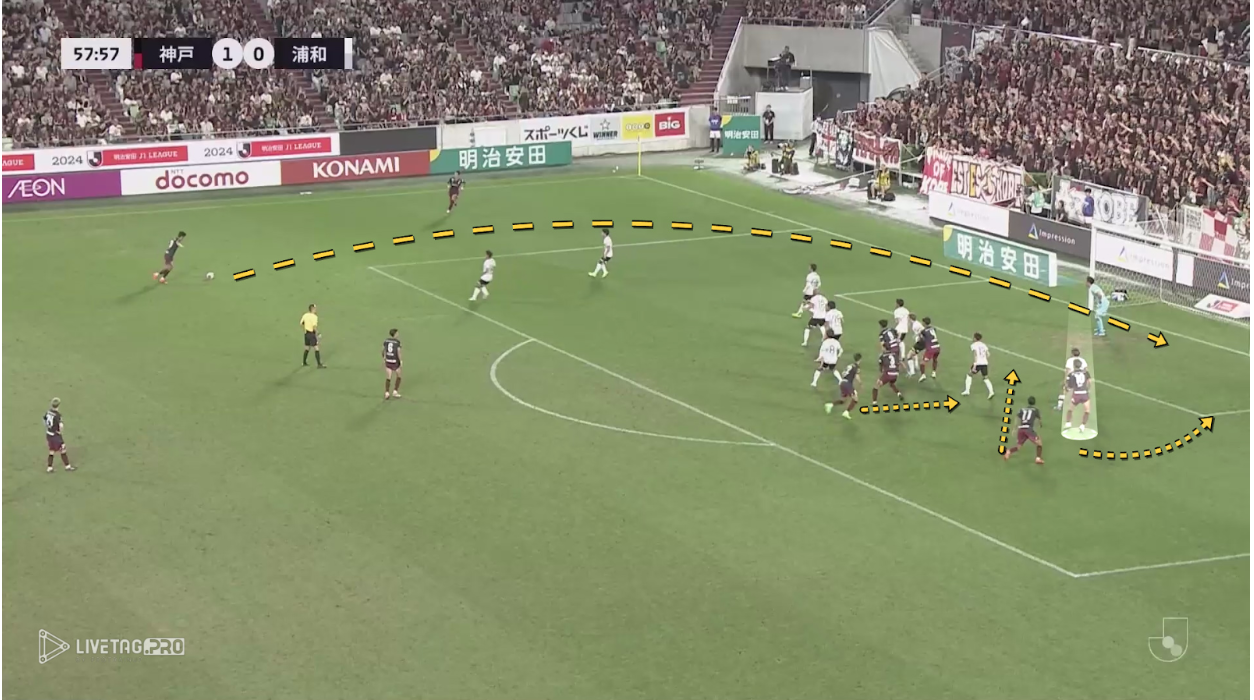
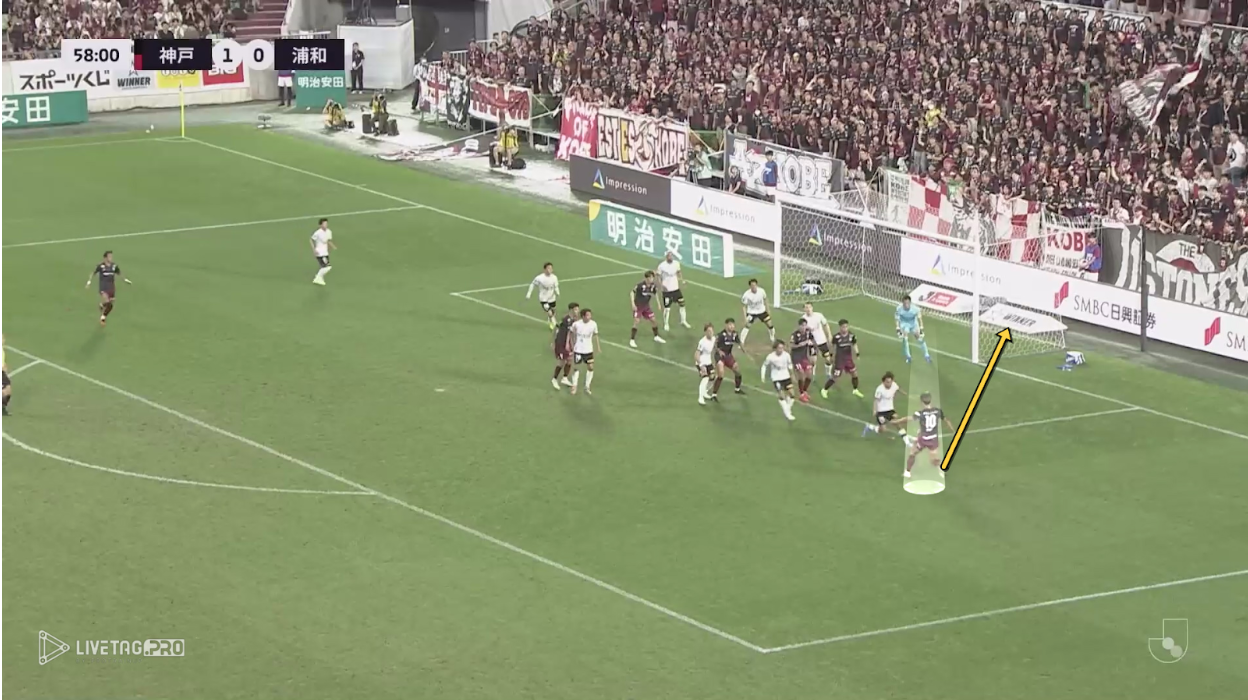
Final Pattern: Against Man-Marking
When facing man-marking in the penalty area, with three opponents in the six-yard box, six Vissel attackers were inside the area. The first line of players blocked defenders from moving to the far post. Three other attackers were on the penalty spot. The tactic here was for the first two players (red and yellow arrows) to run in the opposite direction towards the far post, while the third player blocked defenders from following them.
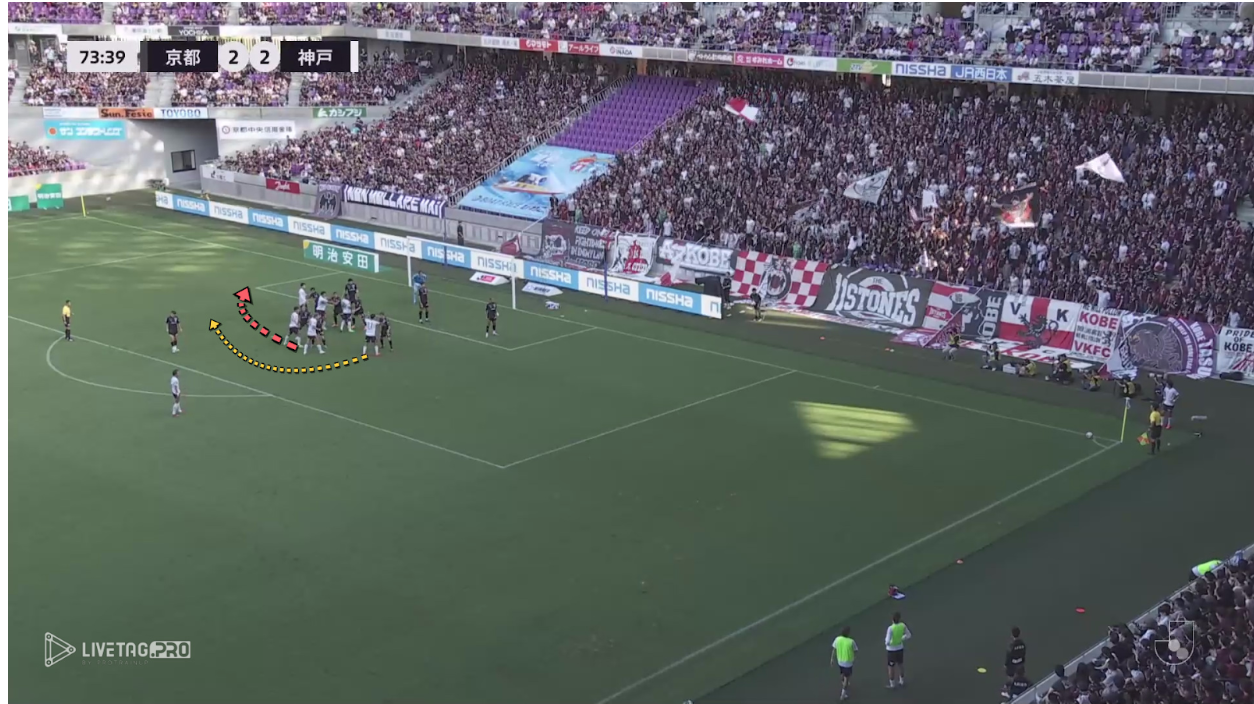
They succeeded in creating separation, but they should have assigned a player to prevent the goalkeeper from intervening.
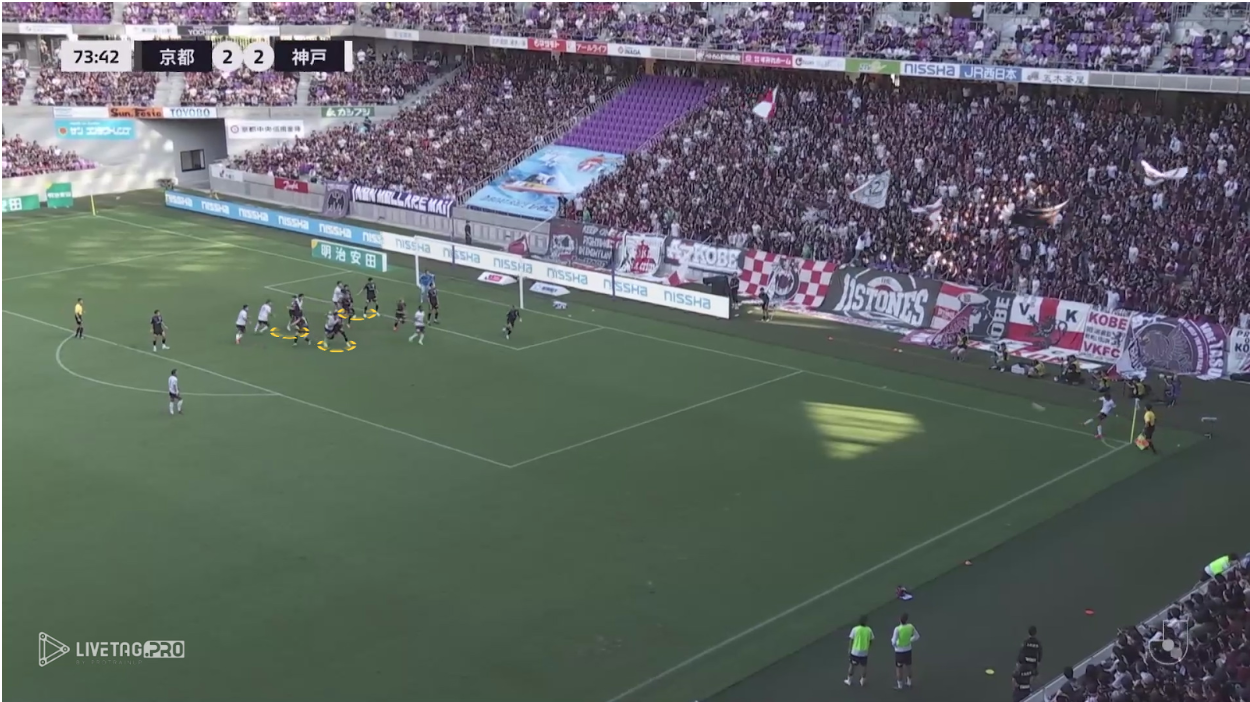
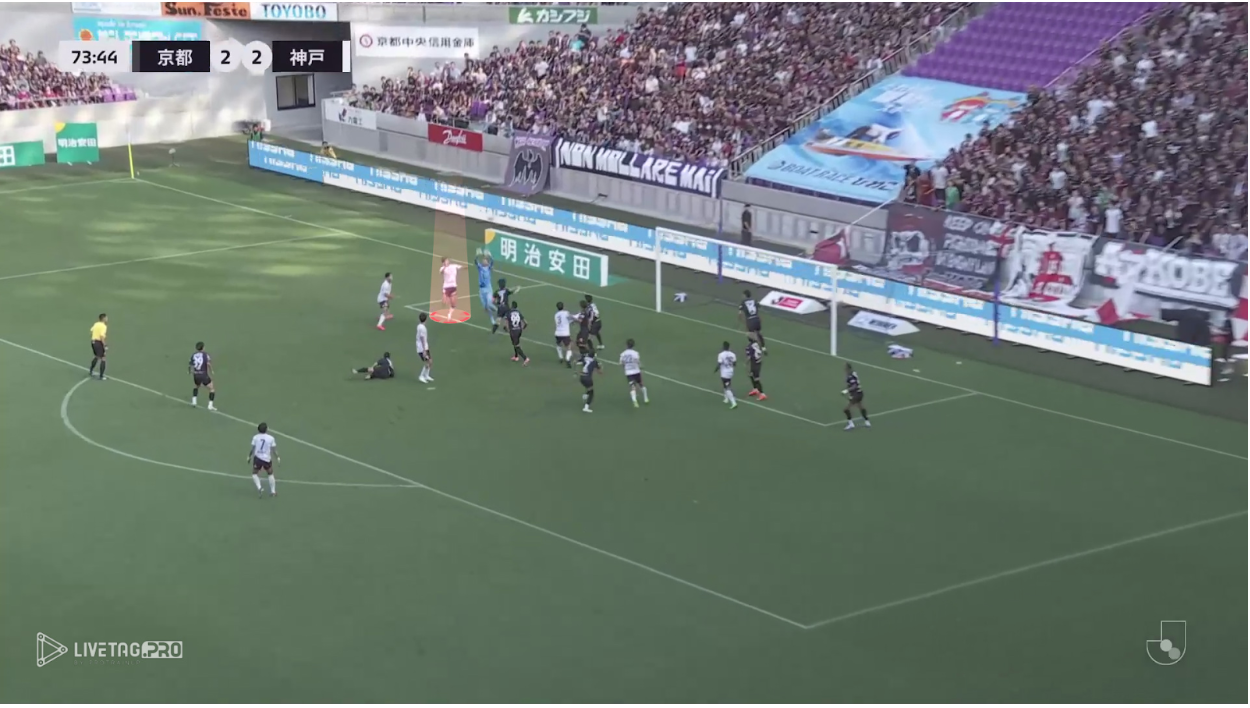
It has been a stellar campaign for Vissel Kobe. They have successfully defended their crown by winning the second J.League title in their 58-year history, finishing four points clear of runners-up Sanfrecce Hiroshima, whilst they also defeated Gamba Osaka to secure their first Emperor’s Cup in five years. They’ve done so thanks to a litany of effective corner kick strategies, and as they look to continue their domestic dominance in Japanese football, it is of the utmost importance that they remain committed to finding new ways to exploit the opposition in set-piece scenarios.
By: Mahmoud Salem / @masalem6
Featured Image: @GabFoligno / Etsuo Hara / Getty Images
